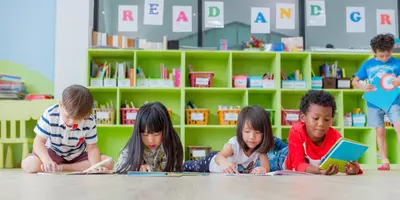
Feb 28, 2019 ● Eric Titner
7 learning styles and how to teach them
Attention teachers—are you making the most of your time in the classroom? The truth is, if you’re applying a “one size fits all” approach to teaching then you’re probably not making the most effective use of your abilities.
Today’s most effective teachers realize that their classrooms are actually microcosms of students with a range of learning styles—and each student has a specific way of absorbing and processing new information that they respond to best. It can be challenging, but teachers who make a real effort to reach each student by taking their individual learning style into account are best positioned to have a positive and lasting impact in their classrooms.
In general, there are seven recognized learning styles—and a range of useful strategies for engaging learners who respond best to each. If you want to maximize learning in your classroom and help your students achieve their goals, consider devoting some time to figuring out which of the following learning styles works best for each and build a program that takes this important information into account.
Visual/Spatial
A visual learner responds well to seeing new concepts and ideas in visual form—things like charts, tables, figures, and diagrams that incorporate helpful colors and shapes—and learn best by seeing things laid out in front of them. Visual learners are typically observant, creative, and well-organized people who are focused and enjoy carefully laid out plans.
If you’re eager to engage a visual learner, make sure your learning program incorporates helpful visual aids and cues and encourage students to use visual tools themselves during the learning process—including sketching out ideas and using note taking and drawing (think flowcharts and mind maps). Also, consider placing them at or near the front of your classroom and decorate your classroom with lots of visual aids.
Solitary/Intrapersonal
These students typically straddle a range of learning styles (including logical, physical, verbal, auditory, and visual learning). How can you spot this type of learner? These are typically private, independent, and introspective students who are driven by self-motivation and self-determination. They often seem like they’re well-suited for tasks like programming, coding, researching, and writing.
The truth is, although it can be challenging to fully engage a solitary learner in a crowded classroom, do your best to guide them through the use of visual learning tools, books, designated quiet areas for self-study, and clearly defined sharing/solitary time in the classroom—it will be time well spent.
Verbal
If you’re working with a verbal learner, don’t forget that words matter most to them—in all of their many written and spoken forms. These learners are typically intellectual and bookish sorts who show a clear preference for writing and reading, so incorporating things like text-based lessons, vocabulary and word activities, and poems are good ideas. It shouldn’t be a surprise that many of these learners wind up in careers involving law, journalism, politics, and writing and administration.
If you're working with a verbal learner be sure to have verbal and written discussions of new concepts and ideas. Take into account if they’re naturally introverted or extroverted—the more outgoing they are, the more they’ll benefit from presentations and interactive talking, while introverted verbal learners will likely respond well to things written down. Be sure to use this information to your teaching advantage.
Physical/Kinesthetic
These energetic learners enjoy the “hands-on approach,” and enjoy physical and tactile activities to support their learning. They typically gravitate towards athletic pursuits. Look for ways to incorporate learning tools that engage their senses and include movement when possible. Role-playing tends to work particularly well with physical learners—although this can be a challenge in a classroom full of students. If you can find a way to make use of these strategies you’ll tend to be more successful at engaging these learners.
Logical/Mathematical
These data-driven, number-focused learners typically are logical and successful in the classroom and veer towards careers in research, science, accounting, and programming. They respond well to puzzles, brain teasers, and tasks involving pattern recognition, classification and grouping, statistics, and numerical and hierarchical information. Aim to incorporate these in your lesson plans whenever possible.
Social/Interpersonal
These types of learners are typically easy to spot—they have a natural predilection for teamwork and interacting and collaborating with their classmates. Although social learners tend to be natural leaders, extroverts, and good communicators, this isn’t a hard a fast rule and can really vary. Another thing worth noting is that social learners can respond well to other learning styles, usually set in a collaborative/interpersonal backdrop. Try incorporating a variety of group activities within your lesson plans to benefit these learners.
Auditory/Musical
These learners tend to respond really well to audio-based lessons, cues, and stimuli. They often prefer to have things explained to them out loud, and really do well with activities that incorporate talking, audio recordings, and music. Your voice and the voices of others in the classroom are great tools when working with auditory learners. Although maintaining a quiet and orderly classroom can be important, your best bet when trying to engage these learners is to incorporate some well-placed sound into your lessons.
If you’re looking to better engage your students and maximize learning in your classroom, consider factoring in the diverse learning styles covered here when developing your lesson plans.


